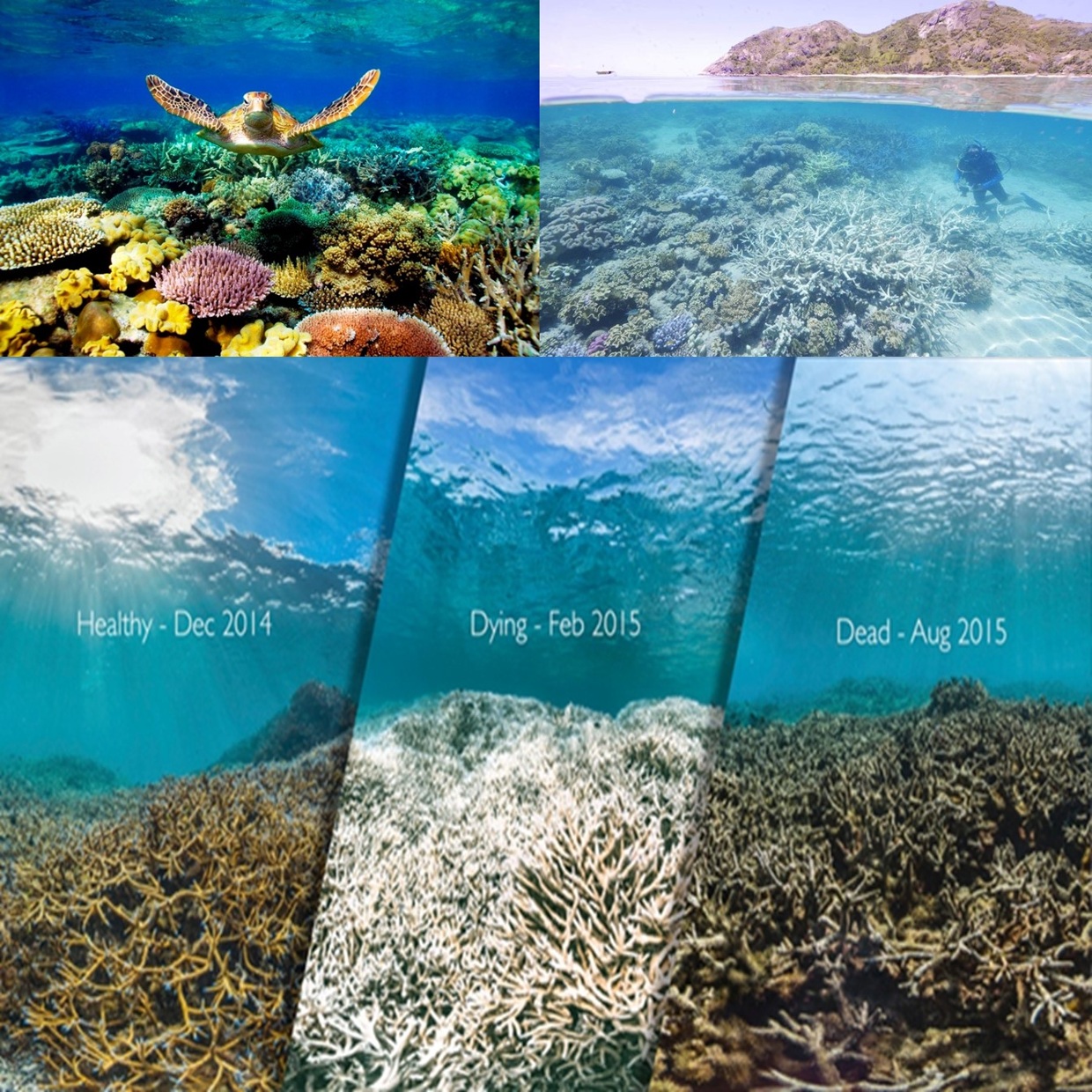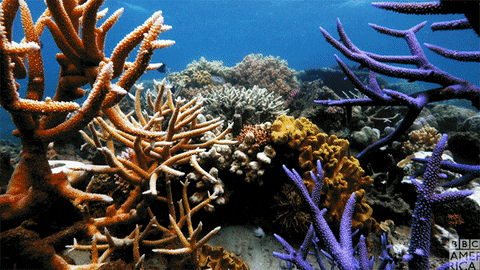WHAT IS CORAL ?
Coral are animals most closely related to a sea anemone or jellyfish. They take the form of polyps
— a tentacled fleshy mouth.
Many coral live in colonies that work together to build hard skeletons of
calcium carbonate — this is the structure that builds
up over time to become a reef.Almost all corals are colonial organisms. This means that they are composed of hundreds to
hundreds of thousands of individual animals, called polyps. Each polyp has a stomach that opens at only one end. This opening,
called the mouth, is surrounded by a circle of tentacles.The polyp uses these tentacles for defense, to capture small animals
for food, and to clear away debris. Food enters the stomach through the mouth. After the food is consumed, waste products are
expelled through the same opening. Most corals feed at night.
To capture their food, corals use stinging cells called nematocysts.These cells are located in the coral polyp’s tentacles and
outer tissues. If you’ve ever been “stung” by a jellyfish (a relative of corals), you’ve encountered nematocysts. Nematocysts
are capable of delivering powerful, often lethal, toxins, and are essential in capturing prey. A coral's prey ranges in size
from nearly microscopic animals called zooplankton to small fish, depending on the size of the coral polyps. In addition to
capturing zooplankton and larger animals with their tentacles, many corals also collect fine organic particles in mucous film and
strands, which they then draw into their mouths.
Coral get most of their food from a symbiotic relationship with single-celled algae called zooxanthellae. These live within the polyp
flesh, where they photosynthesize and produce energy, which the coral feeds on. These plant cells also give coral their color,
typically an earthy brown. But this relationship becomes mutually destructive when things heat up. In temperatures just a
couple degrees outside the range of normal, zooxanthellae begin to release toxins into the flesh of the coral, and the coral promptly
gives them the boot. This is bleaching. Without plant pigments, the flesh of the polyps is totally clear, like a jellyfish. The
bright white calcium carbonate skeleton shines through. A coral can survive a while without
its algae friends, but if the water
temperature does not return to normal within a few weeks, it will die.
The flesh rots away and the skeleton is overtaken with stringy
brown algae.
IMPORTANCE OF CORALS:
Why does coral bleaching matter?
Coral bleaching matters because once these corals die, reefs rarely come back. With few corals surviving, they struggle to reproduce,
and entire reef ecosystems, on which people and wildlife depend, deteriorate. Bleaching also matters because it’s not an
isolated phenomenon. According to the National Oceanic and Atmospheric Association, between 2014 and 2017 around 75% of the world’s
tropical coral reefs experienced heat-stress severe enough to trigger bleaching. For 30% of the world’s reefs, that heat-stress was
enough to kill coral.
How does coral bleaching impact wildlife?
Coral reefs support some of the most biodiverse ecosystems on the planet. Thousands of marine animals depend on coral reefs for
survival, including some species of sea turtles, fish, crabs, shrimp, jellyfish, sea birds, starfish, and more. Coral reefs provide
shelter, spawning grounds, and protection from predators. They also support organisms at the base of ocean food chains. As reef
ecosystems collapse, already at-risk species may face extinction.
How does coral bleaching impact humans?
Coral bleaching impacts peoples’ livelihoods, food security, and safety. Coral reefs are natural barriers that absorb the force of
waves and storm surges, keeping coastal communities safe. Without them, we must rely on manmade seawalls that are expensive,
less effective, and environmentally damaging to construct. Bleached coral also compounds the overfishing crisis by removing links
in the food web and depriving some fish and crustacean species of a place to spawn and develop. Anyone relying on these animals
as a primary source of income or protein will be in trouble. Finally, reef tourism brings in billions of dollars each year and
supports thousands of jobs. Bleached coral reefs, devoid of magnificent marine species, jeopardize it all


It is impossible to imagine our planet without coral.
~~~~~Ian Somerhalder~~~~~


